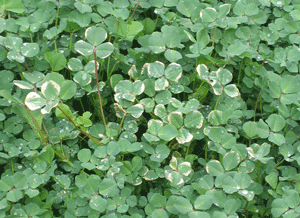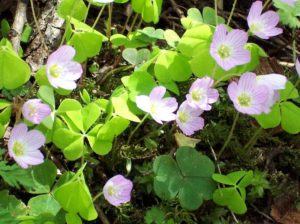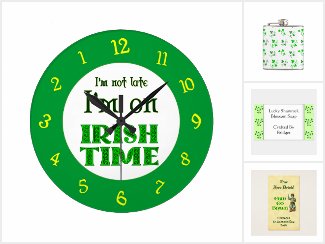All shamrocks are considered lucky and are worn and given as gifts on St. Patrick’s Day. Several different plants are sold as Shamrocks. There is some disagreement as to the exact plant, but most Irish growers will tell you Trifolium repens, or white clover are most commonly known as shamrocks.
If you were lucky enough to receive shamrocks for St. Patrick’s Day, these perennials can grow in your garden all year long.

Trifolium repens, or White Clover are perennial plants, growing about 4 inches high. Trifolium take full sun to part shade and like average water. They spread by rooting stems and can be used as a ground cover.
White clover get white puff-ball shaped flowers in early spring and generally have three leaves.
Indoors they like sun or bright light and should be kept slightly moist. In a 4 inch pot, they will probably need weekly watering.

Oxalis acetosella, or Wood Sorrel is another plant called shamrock. Oxalis is a perennial plant that grows about 5 inches high. They spreads easily by rhizomes and can become invasive. These shamrocks like part shade and moist, woodland conditions.
Oxalis is commonly called clover and has white, five petaled flowers sometimes tinted with purple or pink. Oxalis is usually three-leaved. Indoors they like bright, indirect sunlight and somewhat damp soil.
Three leaved clovers are worn as protective amulets. They were used by St. Patrick to demonstrate the concept of the Holy Trinity while converting the Druids to Christianity.
Four leaved clovers are considered lucky and protective. These shamrocks are said to help the wearer find treasure.
Some Irish botanists say the Irish Shamrock only exists on St. Patrick’s Day.
